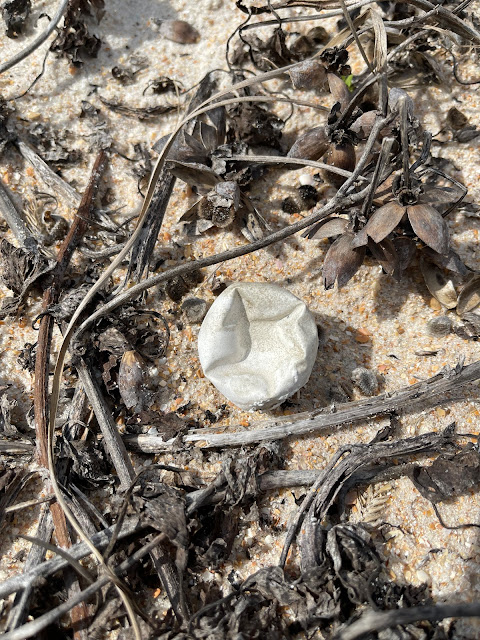At the tail end of March (and into the first week of April), my family and I took a vacation to northern Florida. It was not a herping trip, but invariably some herping took place. Being in that part of Florida at that time of year was really great. Though this past winter wasn't really THAT bad, they are always too long, at least by my standards. So just being somewhere warm was a welcome departure from a part of the country that was trying to shake winter's grasp.
As expected, lots of anoles. Both the native green anoles (Anolis carolinensis) and the non-native brown anoles (Anolis sagrei) were observed, but the browns outnumbered the greens 100:1 (give or take a few).
We hiked this seaside park consisting of ocean scrub habitat. It looked good for gopher tortoises (Gopherus polyphemus) so as we walked we kept our eyes peeled. I spotted a couple of burrows before chatting with another visitor who said she'd seen a tortoise the day before. About ten minutes later I caught my first glimpse of a gopher tortoise's rear end as it ducked into its burrow underneath dense vegetation. I wanted my daughter to see a tortoise so we kept on looking.
Tortoise burrow
Then, right near the parking lot, I spotted this tortoise. It had just emerged from its burrow, the entrance of which is obscured by vegetation in this photo.
With a slight approach, I zoomed in and got a few shots as the tortoise spun around and retreated back toward its burrow. Lumen was able to see the tortoise before it disappeared and she was happy, but I couldn't help but feel concern for the tortoises. The preserve was dismally small, surrounded on three sides by huge resorts, with roads cutting through every which way. A mere decade ago this natural area was much larger. People like to build and build and build some more and then as a sort of compromise, they set aside tiny fragments of natural lands for all to enjoy. And I think most visitors don't ever see a problem with this model. To most people this is like a safe little Jurassic Park. The problem is that it is not sustainable. The tortoises, boxed in and stressed from the barrage of humans, are at risk of being struck by vehicles or fading away due to inbreeding. I can go on, but instead I'll end it with this: support conservation efforts. However you can, just do something.
A view of the adjacent beach
An eggshell from what I believe to be a tortoise (as opposed to a sea turtle), but I really don't know.
We had an unforgettable time at the St. Augustine Alligator Farm Zoological Park. The zoo is one of the best kept - and best represented - zoos I've visited. I had wanted to visit since I was a young kid so I was particularly excited. The highlight of our trip was an exclusive, up close and personal experience with the zoo's entire group of adult Galapagos tortoises. There is an extra cost involved but it goes toward conservation so to me it's a win-win.
The family with Dirk, a 111-year old male tortoise.
This is the historic poured-cement alligator pond at the zoo. In it are a group of impressive, well-fed (understatement) American alligators (Alligator mississippiensis).
A trip to Blue Spring State Park netted these images. Highly recommended natural area. And home to overwintering manatees. Though, by the time we arrived, only one lonely manatee remained at the spring head. The spring was beautiful - dare I say breathtaking, but I couldn't help but notice dozens, or maybe hundreds, of really big plecostemus in the water. These armored catfish, native to South America and popular in the aquarium trade, are known to harass the delicate manatees. I also saw lots of other non-native fish including tilapia (native to Africa and Middle East). According to a 2021 fish count conducted by the Howard T. Odum Florida Springs Institute, the tilapia now make up 86% of the total fish biomass at that site. The only native fish I observed were a few gar. If you're wondering why I can't just enjoy the scenery, it's because I suffer from a bad case of "That doesn't belong here".
A pretty lichen iNaturalist tells me is Christmas lichen
Toward the end of our self-guided tour of the park, we rehydrated at the picnic tables and were straight-up harassed by a couple of squirrels who had - ZERO - fear of humans. While we tried to eat our snacks, these little hellions tried to grab our food away from us.
Yeah it was kind of funny, but I didn't want to spend our vacation in a hospital, so we got the heck out of there. Overall, it was a wonderful trip - a snapshot of northern Florida that in all likelihood, will continue to lose its natural integrity.
.jpg)













